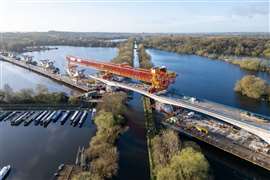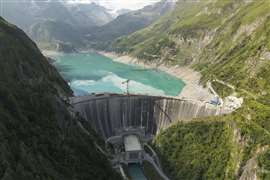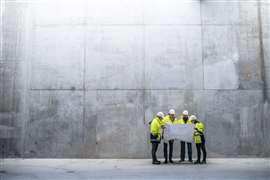Read this article in Français Deutsch Italiano Português Español
Redefining engineering: building a sustainability mindset
09 June 2025
Despite decades of talking about sustainability, engineers still face a perception problem: that it’s expensive, idealistic, or a ‘green’ add-on. But that couldn’t be further from the truth.
 Image: Adobe Stock
Image: Adobe Stock
One of the most famous definitions of sustainability comes from the United Nations Brundtland Commission. In 1987, they defined sustainability as “meeting the needs of the present without compromising the ability of future generations to meet their own needs.”
 Pia Abercromby
Pia Abercromby
This is a very high-level definition, and it can be confusing due to its lack of detail.
My engineering brain likes delving into more detail, so my preferred definition includes considering the three pillars of sustainability – social, environmental and economic.
Social sustainability involves implementing fair and equitable practices in place for our communities that promote social justice and wellbeing. Environmental sustainability is more commonly understood and refers to protecting and preserving natural resources and ecosystems. Economic sustainability entails creating a stable and prosperous economy to support both the social and environmental pillars.
Applying a sustainability mindset to engineering projects means thinking more holistically than just lowest construction cost, considering whole of life costs and impacts.
If we keep this in mind, we can see that engineering often has sustainability at its heart. For instance, adding bicycle and pedestrian paths to a road or bridge improves social impacts by providing a connection between communities that is also more equitable since it does not require vehicle ownership or transit payment. It enhances environmental impacts by enabling people to use zero emission transportation and boosts local economies by facilitating commuting.
Having a sustainability mindset does not necessarily mean that we need to change our actions dramatically, it can be acknowledging the good things we are already doing.
Taking sustainability to the next level in engineering
Recognising the sustainability aspects of our projects enables us to look for opportunities to enhance projects even further.
For example, balancing earthworks on site is standard practice. It saves costs associated with purchasing new materials and disposing of existing ones while reducing environmental impacts by minimising emissions from transportation and mining. This practise is a great example of circularity (a core principle of sustainability) in action.
Taking circularity to the next level on a project might mean considering treating contaminated materials on site, allowing their reuse within the project boundaries instead of disposal at a contaminated materials site. Taking the time to look for sustainability opportunities in projects results in an improved outcome.
Another example of inherent sustainability in engineering is the requirement to consider future demands on structures, whether from seismic activity, increasing truck weights, or changing climatic events. By reviewing projected loads in designs, we aim to minimise the impacts on local communities, post-event. In this case, we are embracing the resilience mindset, another core principle of sustainability.
Taking resiliency to the next level might involve applying the 4 R’s of resilience – asking not just how do we make this structure as robust as possible, but is there redundancy in the system, do we have resources available to respond if there is damage in an event, and do we have the ability to rapidly respond?
This broader resilience approach reduces costs and material use.
How engineers can be the change
 Construction materials stocked and organised. Image: Adobe Stock
Construction materials stocked and organised. Image: Adobe Stock
Any engineer can enhance the sustainability of projects through education on the latest design and technology innovations.
Knowing about a local company who is “washing” contaminated materials, or understanding how AI can analyse asset data to identify system redundancy, can improve our projects’ circularity and resilience. Continued professional development, as required by regulatory bodies, offers an opportunity to learn about sustainability innovations.
Refining the value proposition of sustainability is another impactful approach. When we share stories of how sustainability was not a cost burden to a project, but had positive social, environmental, and economic outcomes, we help our industry embrace change. Historically, use of more “sustainable” materials would not have been cost-competitive. However, companies are innovating to reduce the cost of new and different materials and processes. There is now a negligible difference in costs between low-carbon concrete and traditional concrete – suppliers like Lafarge confirm this.
According to the National Asphalt Pavement Association, the use of only ~21% reclaimed asphalt pavement (RAP) within new asphalt mixtures is estimated to have saved US$7.80 per-tonne in the US compared to using all virgin materials. As virgin materials become scarcer and transportation costs increase, the assumed “cost” of sustainability is diminishing. Cost, as a perceived barrier to being sustainable, is starting to disappear, and we should distribute these good news stories to encourage adoption of sustainable solutions.
When engineers lead with sustainable solutions, clients follow — and that’s how industry norms shift. Change might feel risky, but standing still is the bigger risk.
Learn something new. Share a success story. Start the conversation. Because the future of engineering isn’t just about building things — it’s about building better. Be the reason sustainability becomes second nature.
STAY CONNECTED


Receive the information you need when you need it through our world-leading magazines, newsletters and daily briefings.
CONNECT WITH THE TEAM














